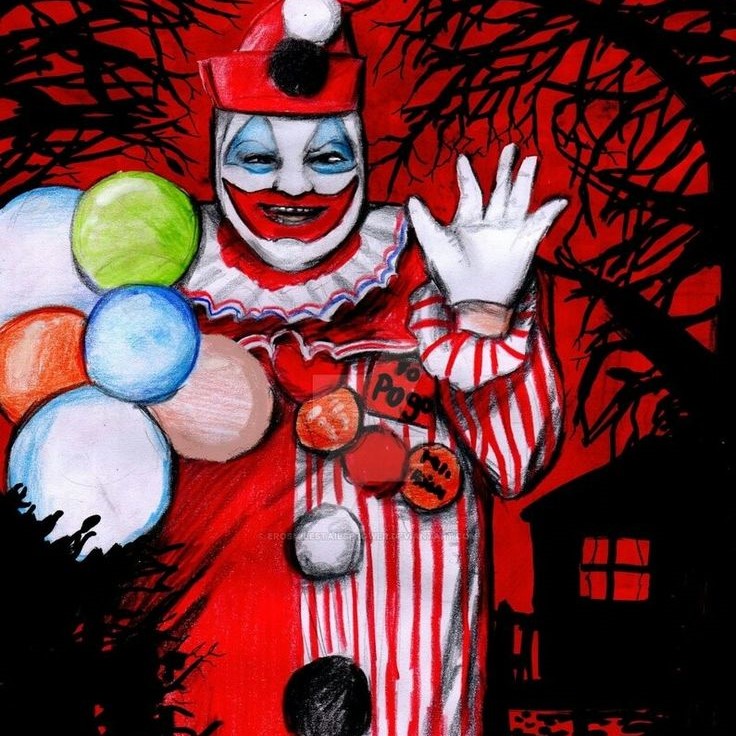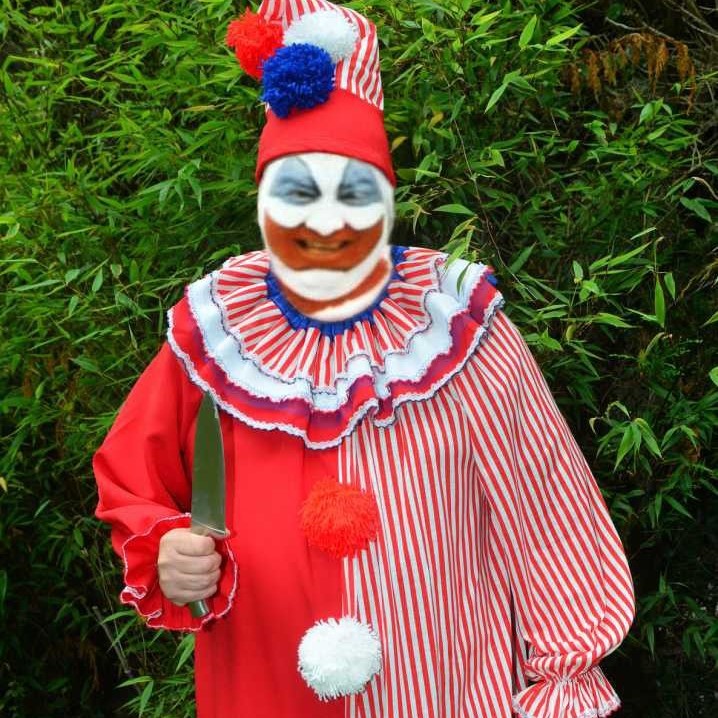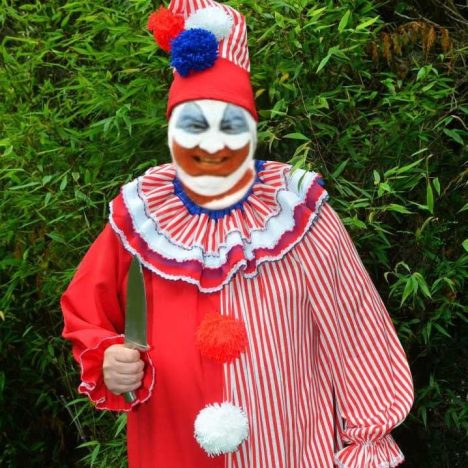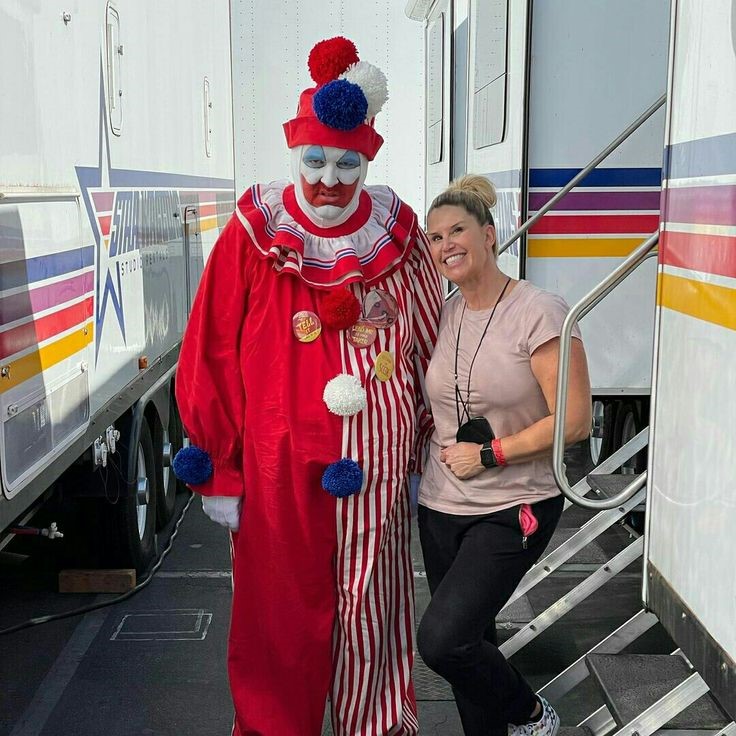Contents
- 1 The Dark Origins of Clown Costumes
- 2 John Wayne Gacy: A Facade of Normalcy
- 3 The Cultural Shift: Clowns Transformed
- 4 The Psychological Impact on Society
- 5 The Influence of Gacy on Pop Culture
- 6 Making Responsible Choices for Halloween
- 7
- 8 The Future of Clown Costumes in Society
- 9 Conclusion: Unmasking the Legacy of Gacy’s Clown Costume
The Dark Origins of Clown Costumes
Clown costumes, with their vibrant colors and exaggerated features, have a long history that dates back to ancient civilizations. Such costumes often represented joy and laughter, serving as entertainers in the royal courts or during public festivities. However, as times changed, the comedic role of clowns began to evolve into a more complex figure within popular culture. While clowns were initially designed to amuse and entertain, their symbolism has grown increasingly dark over the years. The duality of clowns—both as bringers of joy and potential harbingers of fear—became prominent throughout the 20th century. This transformation can be directly linked to John Wayne Gacy, a man who embodied these contrasting ideals. Gacy, who performed as “Pogo the Clown,” used his clown persona to engage with young children and families during community events. However, behind this jovial facade lurked a murderer—a man responsible for the horrifying deaths of 33 young men and boys. The contrast between Gacy’s public persona and his heinous crimes has forever altered the perception of clowns. Today, the John Wayne Gacy clown costume serves as a chilling reminder of how appearances can be deceiving, prompting discussions about trust and safety in an increasingly complex society.

John Wayne Gacy: A Facade of Normalcy
Understanding the character of John Wayne Gacy is critical when discussing the implications of his clown costume. Born in 1942, Gacy appeared to be an average, hardworking individual to his community. He was a successful contractor, a family man, and an active participant in local events, often seen dressed as a clown to entertain children. This unsettling juxtaposition—of a seemingly charming clown and a notorious serial killer—creates a rich ground for examining the psychological aspects of fear in human nature.
Gacy’s ability to don the clown costume while committing such atrocities demonstrates the concept of “the mask we wear.” It raises questions about identity, morality, and the capacity of individuals to compartmentalize their lives. Behind the painted smile and boisterous laughter of Pogo the Clown was a man capable of unfathomable horror, making his story all the more poignant in discussions of human nature and true crime.
The Cultural Shift: Clowns Transformed
The impact of John Wayne Gacy on the cultural perception of clowns cannot be overstated. His actions contributed significantly to a shift in how clowns are portrayed in various media forms, particularly in horror genres. Movies like Stephen King’s “It” have capitalized on this fear, portraying clowns as sinister figures. This transition markedly shifted the narrative surrounding these characters. Once jovial entertainers, clowns became archetypes of dread—instilling a sense of fear and anxiety.
Following Gacy’s revelations, many people began to associate clown costumes with horror rather than humor. The Halloween season witnessed a marked increase in the popularity of horror-themed clown costumes, frequently inspired by Gacy and similar figures. This transformation illustrates the power of societal narratives to shape perceptions and influence behaviors, reminding us of the thin line between innocence and terror.
The Psychological Impact on Society
The psychological ramifications surrounding the Gacy clown costume are as complex as the character himself. Many individuals experience a profound fear of clowns—known as coulrophobia. This phobia does not merely stem from unresolved childhood issues but also from the societal depiction of clowns as unsettling entities. The case of John Wayne Gacy amplifies this fear, cementing the notion that something so playful can also embody evil.
Mental health professionals often discuss the impacts of such imagery on the psyche of children and adults alike. Exposure to representations that merge joy with horror can contribute to long-lasting anxieties. Thus, the John Wayne Gacy clown costume acts as more than a Halloween prop; it becomes a symbol of societal unease. By examining the psychological layers of these feelings, we can better understand how events from the past can ripple through generations, affecting societal fears and cultural perceptions.

The Influence of Gacy on Pop Culture
The legacy of the John Wayne Gacy clown costume extends into popular culture in significant ways. Artists and creators often utilize Gacy’s story as a medium to explore darker themes, transforming horror into an art form. The chilling image of Gacy as “Pogo the Clown” has been referenced in various music videos, television shows, and film adaptations, reiterating the ongoing fascination with true crime narratives.
Merchants also capitalize on the fascination surrounding this dark figure. Costumes inspired by Gacy are typically marketed during Halloween, igniting debates about the ethics of commodifying real-life tragedies. While some argue that these representations help keep the memory of victims alive, others contend that they trivialize the genuine horror associated with Gacy’s legacy. This ongoing discussion illustrates the complex relationship between culture and morality.
Making Responsible Choices for Halloween
When considering costumes for Halloween, it is essential to make responsible choices that respect the diverse backgrounds and feelings of those around us. Here are some key points to keep in mind when selecting Halloween costumes:
1. Understanding Impact on Others
- Awareness of Sensitivities: Individuals should be aware that their costume choices can impact others significantly. Costumes that reference real-life figures associated with tragedy or horror, such as John Wayne Gacy, can evoke strong emotional responses.
- Potential Distress: The Gacy clown costume, for example, may be particularly distressing for those who have been affected by similar crimes or for individuals who have personal connections to the horror genre. Understanding and acknowledging these sensitivities is vital.
2. Celebrating with Sensitivity
- Spooky Season Enthusiasm: Halloween is a time for many to celebrate with enthusiasm, creativity, and excitement. However, it is crucial to balance that creativity with sensitivity toward those who may have experienced trauma.
- Choices Matter: Reflecting on how costume choices may be perceived by others allows for more thoughtful celebrations that take into account the feelings and experiences of the community.
3. Finding the Right Balance
- Fun and Imagination: Strive to select costumes that reflect fun and imagination rather than those that might invoke genuine fear associated with tragedy. Focusing on costumes that celebrate lighthearted themes can foster a more inclusive atmosphere.
- Creative Alternatives: Consider exploring costume themes that celebrate creativity without leaning on real-life horrors. There are countless imaginative and whimsical characters to draw inspiration from that can bring joy instead of discomfort.
4. Promoting Awareness and Conversations
- Engaging in Discussions: As a community, we can engage in discussions about the history and implications of certain costumes. This allows for greater awareness and understanding of the cultural factors surrounding Halloween.
- Respect for Victims: By discussing sensitive topics and promoting responsible costume choices, we create a respectful environment for victims of horrific acts and their families. These conversations can contribute to a greater sense of empathy and understanding in our celebrations.
5. Embracing the Spirit of Halloween Responsibly
- Community Responsibility: Celebrating responsibly during Halloween means that we, as a community, take charge of our collective choices. This includes encouraging others to think critically about their costume selections.
- Creating Enjoyable Experiences: Ultimately, responsible choices during Halloween should focus on creating enjoyable experiences for all attendees. By finding a balance between festive creativity and respect for all, we can ensure that Halloween remains a fun and inclusive celebration.
The Future of Clown Costumes in Society
As society evolves, so too do the meanings attributed to costumes, including clowns. Moving forward, it’s essential to approach the subject of clown costumes with thoughtfulness and respect. Understanding the history of figures like John Wayne Gacy can serve as a catalyst for discussions about fear, morality, and human nature.
Future generations must navigate this complexity in a way that acknowledges the past while allowing for creativity and celebration. Rather than letting Gacy’s dark legacy define clown costumes, we can reframe discussions to emphasize the human experience—highlighting the stories of resilience and community that counteract the darkness.
Conclusion: Unmasking the Legacy of Gacy’s Clown Costume
Ultimately, the John Wayne Gacy clown costume symbolizes a dark chapter in history, prompting reflection on the concept of fear, morality, and the masks we wear each day. Even as we approach Halloween—a season of basic amusement—let us remember the deeper implications of our choices. The legacy of Gacy requires us to confront challenging questions about victimhood, societal norms, and our perceptions of safety.

By considering these factors, we can create an environment that honors the past while allowing for joyful celebrations. The John Wayne Gacy clown costume is a somber reminder that not all that seems cheerful is innocent. It’s a testament to humanity’s complexity and the ongoing journey to understand the boundaries between light and shadow. As we navigate this realm, let us commit to honoring victims and fostering safe spaces—both now and in the future.



